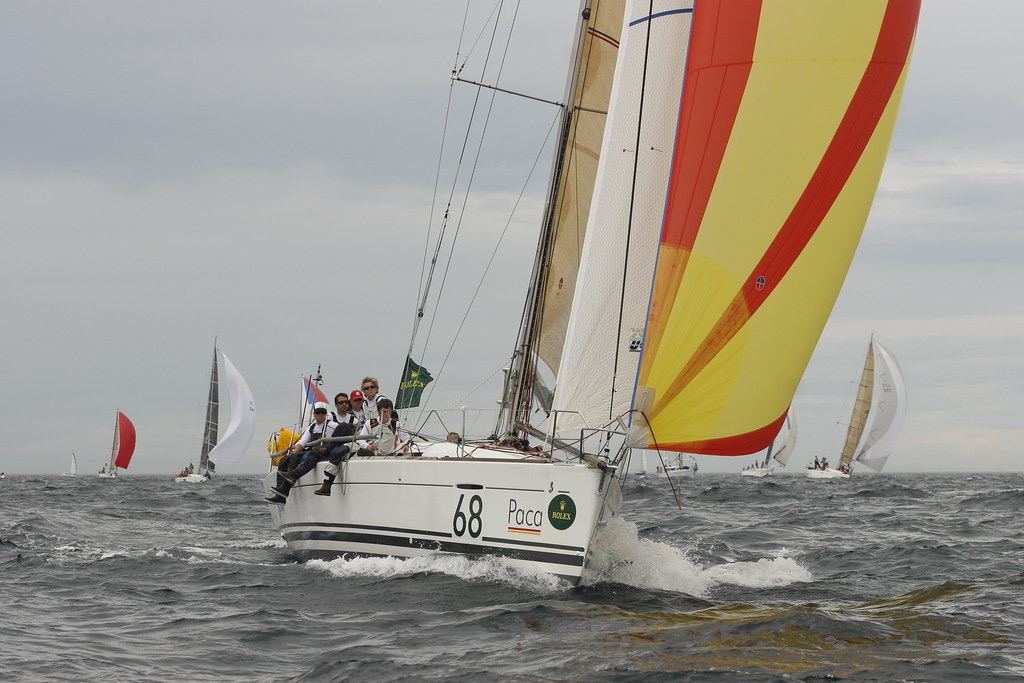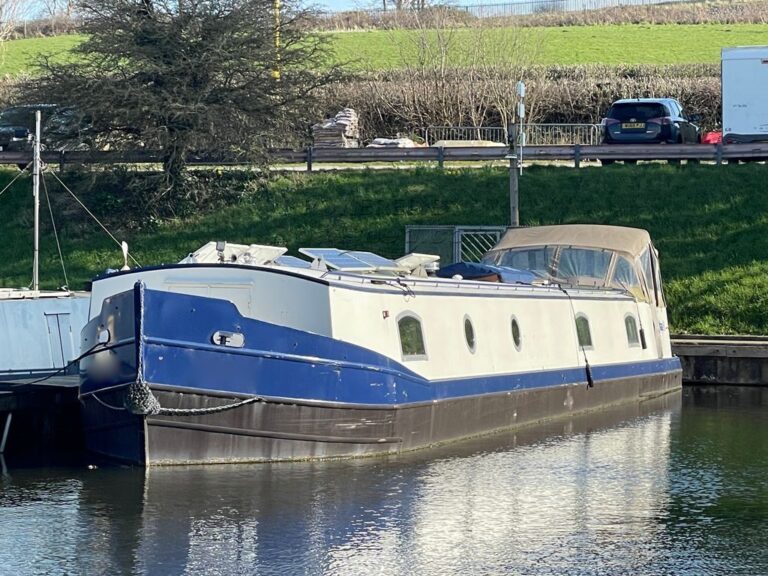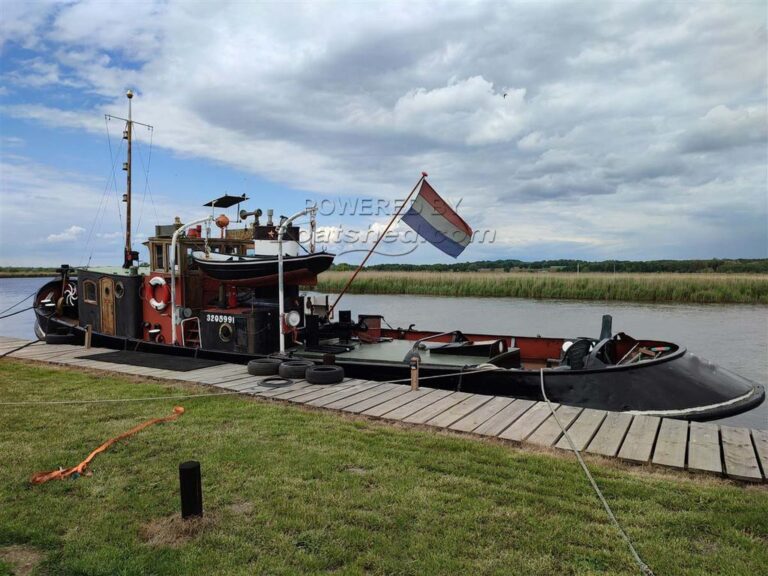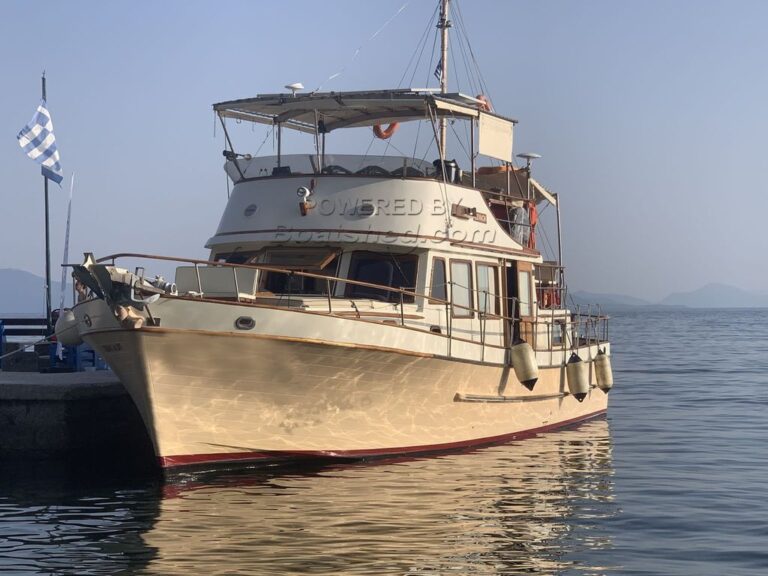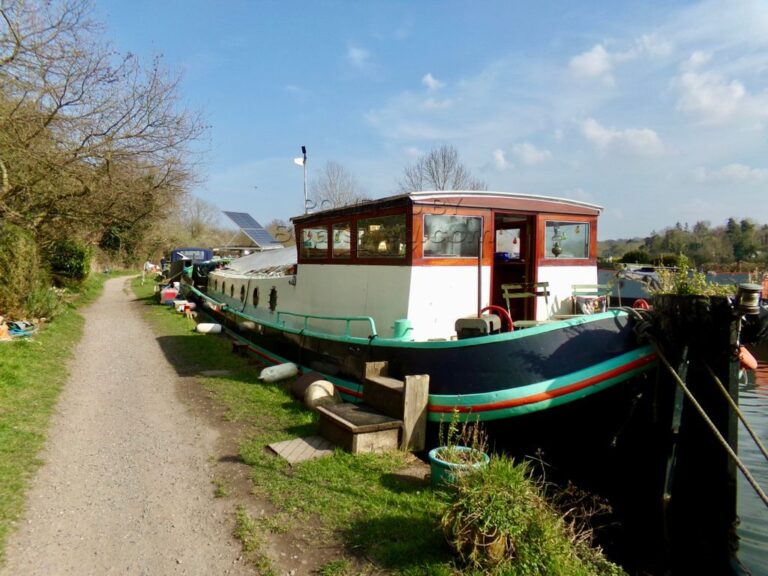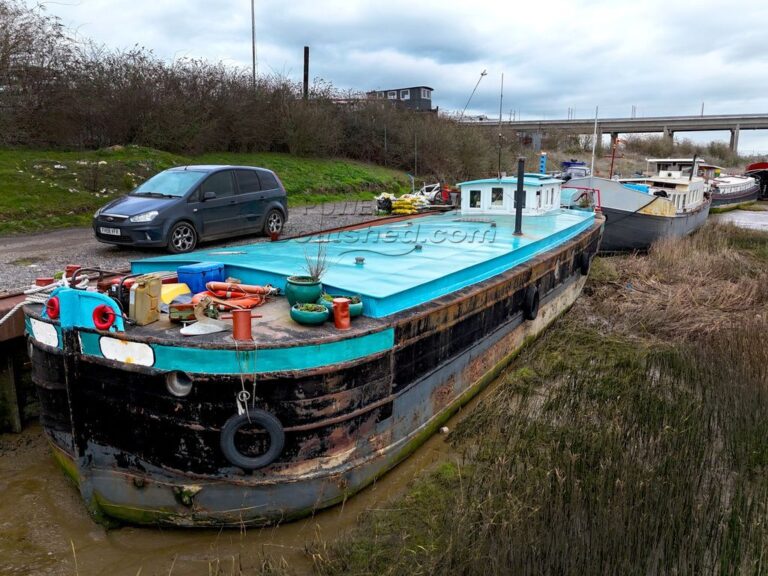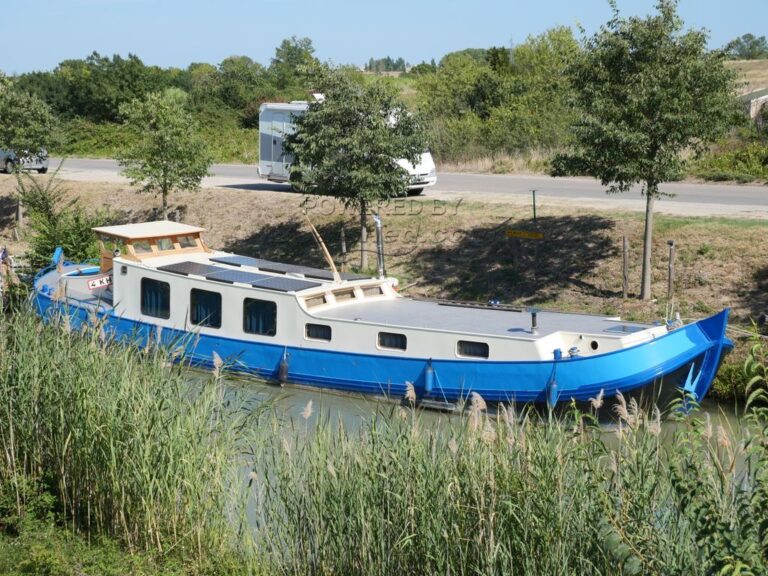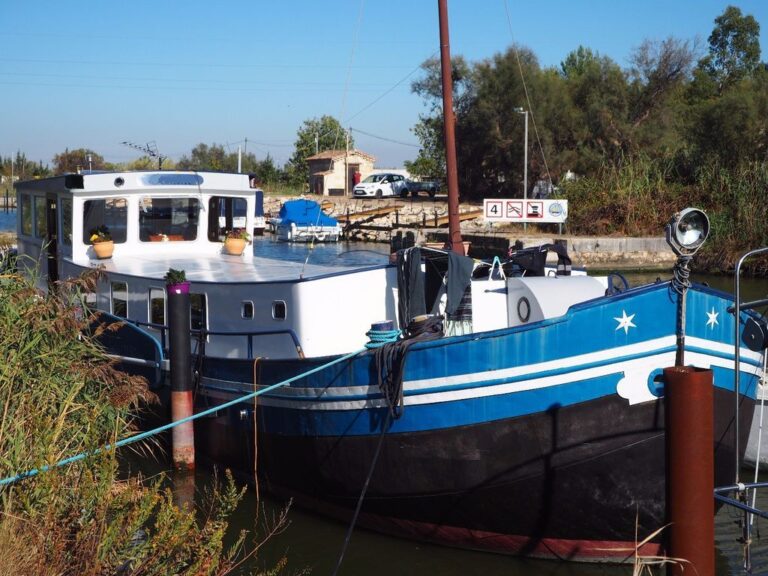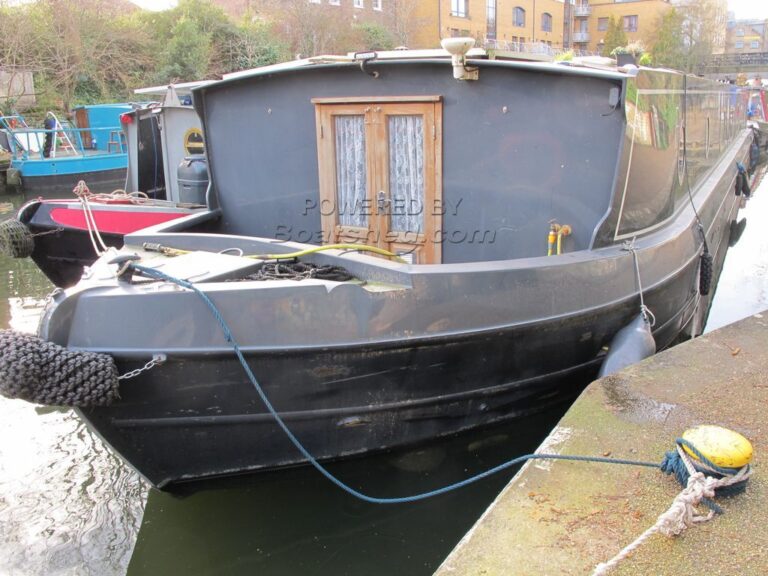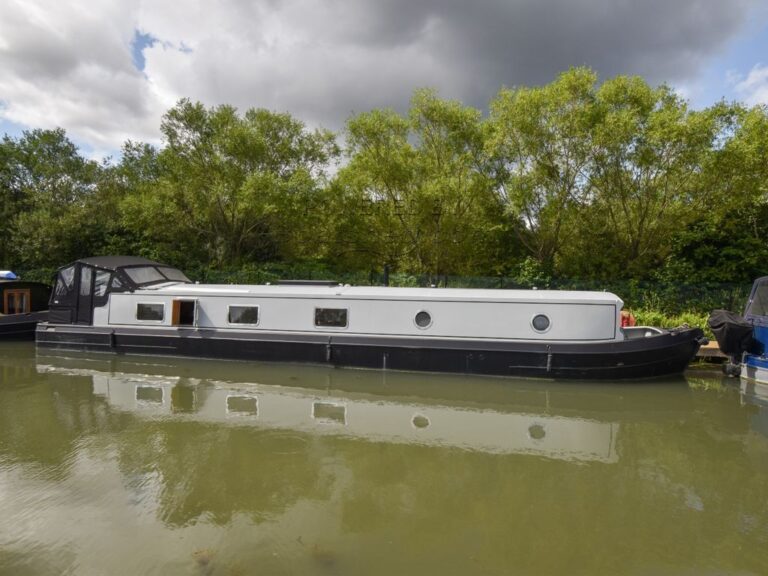Beneteau emerges in the sailing landscape as a seasoned player, known for its pragmatic approach to yacht design and manufacturing. Balancing tradition with modest innovation, Beneteau crafts a range of sailing vessels that promise reliability and accessibility. Without claiming the loftiest heights of luxury, Beneteau’s offerings navigate a middle path, making them suitable for a broad spectrum of sailors, from families enjoying weekend coastal ventures to serious seafarers embarking on more ambitious journeys.
Respect for Beneteau’s heritage in the boat-building industry is coupled with a recognition of the brand’s conservative progression in design and technology. The focus remains steadfast on creating functional, user-friendly yachts that offer a predictable and comfortable sailing experience. While Beneteau may not be at the forefront of cutting-edge advancements, their commitment to steady quality has earned them a loyal following among sailing enthusiasts.
Beneteau’s influence in the yachting world is significant, yet it acknowledges its limitations and operates within them, understanding that not every sailor seeks the pinnacle of innovation or luxury. Each yacht from their docks represents a blend of practicality and modest elegance, suitable for those looking to enjoy the sailing experience with a vessel that promises to perform without unnecessary complexity.
In sum, Beneteau stands as a dependable choice for many. Its boats are a testament to an enduring brand that values functional design and dependable performance. The result is a fleet of yachts that meet the expectations of a market looking for established value, ensuring that the brand continues to sail in the hearts of its patrons.
Beneteau Yachts Company Background and History
Beneteau’s voyage began in 1884 in the quaint town of Saint-Gilles-Croix-de-Vie on the French coast, founded by shipbuilder Benjamin Bénéteau. Initially anchored in crafting fishing vessels, the company carved out a name for its durability and functionality, laying the groundwork for its ethos. The latter part of the 20th century saw Beneteau ride the tide into the recreational sailing industry, shifting from workboats to pleasure crafts—a move emblematic of the brand’s agility and foresight.
As Beneteau set sail into the leisure boating market, it gradually established itself as a formidable force, offering a range of sailboats that catered to the burgeoning crowd of sailing enthusiasts. The shift to pleasure crafts saw an expansion of their vision and operations. By the 1980s, Beneteau had begun cementing its global presence, extending its reach beyond French waters into the international market.
The expansion led to the establishment of several key manufacturing sites, each becoming a pivotal node in the Beneteau production network. The primary site in Vendée, France, remains the heart of Beneteau’s manufacturing operations, continuing a century-long legacy of French maritime craftsmanship. In the 1990s, to respond to the increasing demand and to embrace more cost-effective production methods, Beneteau expanded its manufacturing footprint to the United States with a facility in Marion, South Carolina. This site was strategically chosen for its proximity to a vibrant boating community and its accessibility to the American market.
Later expansions included facilities in Poland and Italy, further diversifying the manufacturing bases and optimising production for European markets. The Polish site, in particular, has been noted for its significant contribution to the brand’s output, leveraging the country’s skilled labor force and efficient production costs.
The establishment of these international sites has allowed Beneteau to answer the call of various market demands while maintaining a standard of quality synonymous with the brand’s legacy. Today, “Where are Beneteau boats made?” is a question that reflects the company’s global reach, with manufacturing footprints across France, the United States, Poland, and Italy, each playing a vital role in bringing the wide range of Beneteau models to harbours around the world.
Through this global expansion, Beneteau has managed to balance its heritage with a global perspective, ensuring that every yacht that leaves its yards is both a part of its storied history and a citizen of the world, ready to meet the diverse needs of its global clientele. Whether in the intricate woodworking of the interiors, the hull’s resilient fibreglass, or the fine stitching of the sails, each Beneteau boat is a product of international cooperation, yet unmistakably born of a lineage that started in the small French town over a century ago.
Design and Construction
Beneteau’s legacy in yacht construction has been one of evolution, mirroring the shifting tides of boating demands and technological advancements. While the company’s origins are steeped in the tradition of wooden boat-building, it has skilfully navigated the transition to fibreglass construction, which has become the industry standard due to its durability, ease of maintenance, and capacity for innovative designs.
As boating has become more accessible, Beneteau has pivoted its design strategy to prioritise the cruising market, distinguishing itself from the race-oriented approach of Jeanneau. This focus is reflected in their use of space, the balance of sailing performance with comfort, and the integration of amenities that ensure a pleasant experience for long-haul journeys. The hull designs, for example, have evolved to offer greater beam and stability, providing a steadier platform for leisurely cruising. The company has embraced a more open and airy interior layout, maximising space utilisation and onboard comfort – a testament to their understanding of the needs of their primary audience: cruising enthusiasts.
With the introduction of newer models, Beneteau has continued to innovate in the materials and methods used in construction. Advances in composite technology have allowed for the development of lighter, yet stronger hulls and decks. The use of balsa wood cores for decking, coupled with the latest in resin infusion techniques, exemplifies Beneteau’s commitment to improving structural integrity and performance while maintaining cost-efficiency. This translates to yachts that are resilient in a variety of sea conditions, yet light enough to maintain the ease of handling that cruisers appreciate.
In the realm of interiors, Beneteau has progressed from the extensive use of solid woods to adopting modern composite materials that emulate the warmth and elegance of wood while offering improved moisture resistance and reduced maintenance. This shift not only aligns with contemporary aesthetics but also addresses practical considerations of weight and durability.
At the heart of Beneteau’s design philosophy lies a commitment to user-friendly sailing. Rigging systems are developed to be intuitive, allowing for single-handed sailing or easy management by a cruising couple or family. Features such as roller furling sails, bow thrusters for docking, and autopilot systems are often standard, reinforcing the brand’s dedication to creating yachts that are as enjoyable to sail as they are to live aboard.
The construction process itself has been refined over the years to increase efficiency and quality control. Beneteau’s production lines are a blend of artisanal craftsmanship and industrial precision, ensuring that each yacht not only meets the aesthetic and functional standards but does so with an attention to detail that keeps the company at the forefront of mass yacht production. Laser cutting for wood panels, robot-assisted lamination, and computer-aided design are all part of the modern Beneteau shipyard, underscoring a future-forward approach grounded in a rich history of boat-building.
Range of Models
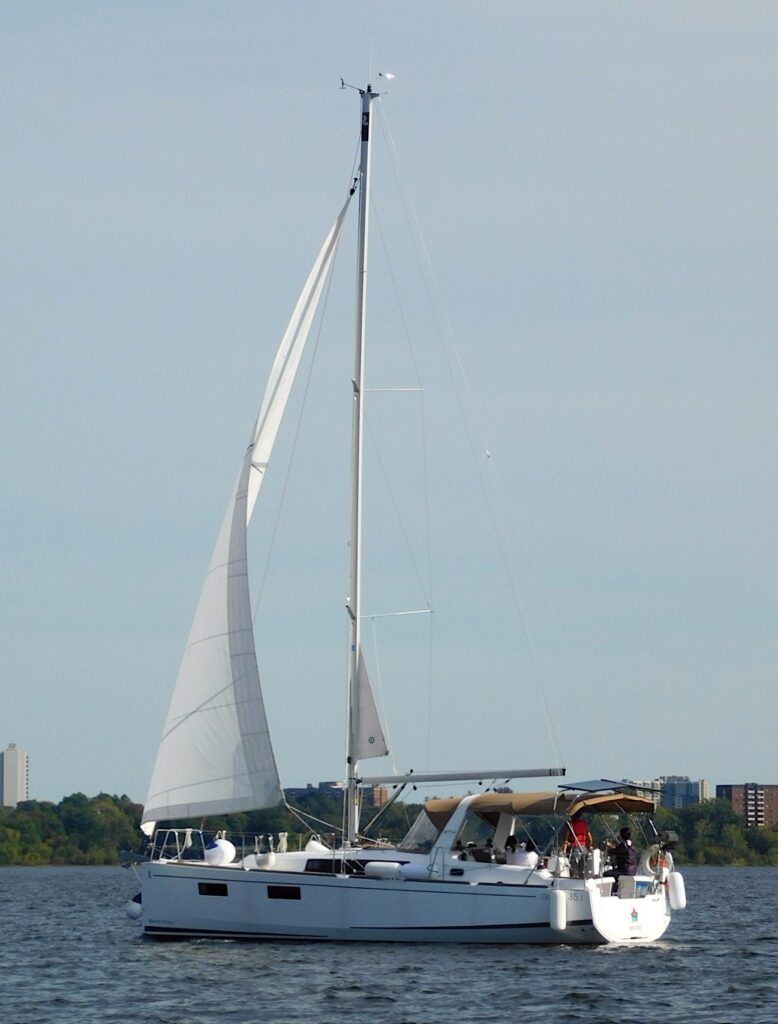
Beneteau’s diverse lineup caters to various facets of the cruising lifestyle, offering a spectrum of models that underscore the brand’s commitment to accessibility, comfort, and performance. Each line within the Beneteau fleet has been carefully crafted to address the nuances of the cruising experience, from compact day sailors to luxurious long-range cruisers.
Oceanis Series
The Oceanis series stands as the cornerstone of Beneteau’s cruising ethos. Renowned for their comfort and ease of handling, these yachts are designed with the family and long-term cruiser in mind. The hallmark of the Oceanis line is its versatility, with models ranging from 31 to 60 feet, each offering a unique blend of liveaboard luxury and practical sail-ability. Features such as spacious cockpits, user-friendly rigging, and comfortable saloons make the Oceanis yachts a popular choice among cruisers looking for a reliable and inviting sailing home.
- GENERATION 1 (Launched 1986-1991)
- Oceanis 320a, 1987
- Oceanis 350, 1985
- Oceanis 370, 1989
- Oceanis 390, 1987
- Oceanis 430, 1985
- Oceanis 500, 1987
- GENERATION 2 (Launched 1991-1995)
- Oceanis 281, 1994
- Oceanis 300, 1991
- Oceanis 321, 1994
- Oceanis 351 / 352, 1993
- Oceanis 400, 1992
- Oceanis 440, 1991
- Oceanis 461, 1995
- Oceanis 50, 1995
- Oceanis 510, 1992
- GENERATION 3 (Launched 1993-2003)
- Oceanis 36CC, 1996
- Oceanis 40CC, 1994
- Oceanis 42CC, 2001
- Oceanis 44CC, 1994
- Oceanis 57, 2002
- GENERATION 4 (Launched 1995-2008)
- Oceanis Clipper 311
- Oceanis Clipper 323
- Oceanis Clipper 331
- Oceanis Clipper 343
- Oceanis Clipper 361
- Oceanis Clipper 373
- Oceanis Clipper 381
- Oceanis Clipper 393
- Oceanis Clipper 411
- Oceanis Clipper 423
- Oceanis Clipper 473
- Oceanis Clipper 523
- GENERATION 5
- Oceanis 34, 2008
- Oceanis 37, 2007
- Oceanis 40, 2006
- Oceanis 41, 2011
- Oceanis 43, 2006
- Oceanis 46, 2007
- Oceanis 50, 2005
- Oceanis 50 mk2, 2009
- Oceanis 54, 2008
- Oceanis 58, 2009
- GENERATION 6
- Oceanis 31
- Oceanis 35
- Oceanis 38
- Oceanis 45
- Oceanis 48
- Oceanis 55
- Oceanis 60
- GENERATION 7
- Oceanis 30.1
- Oceanis 35.1
- Oceanis 38.1
- Oceanis 41.1
- Oceanis 46.1
- Oceanis 51.1
- Oceanis 55.1
- Oceanis Yacht 62
First Series
The First series is Beneteau’s nod to cruisers who favour a zest of performance with their sailing. While the line includes racer/cruiser models that have found success on the regatta circuit, it remains firmly planted in the cruising world, offering speed and agility without sacrificing comfort. The First range is ideal for those who may occasionally indulge in competitive sailing but primarily enjoy spirited cruising adventures.
- GENERATION 1
- First 18, 1979
- First 22, 1978
- First 24, 1983
- First 25, 1980
- First 26, 1984
- First 27, 1978
- First 28, 1981
- First 29, 1984
- First 30 & 30E, 1977
- First 32, 1981
- First 38, 1982
- First 42, 1981
- GENERATION 2
- First 235, 1986
- First 265, 1991
- First 285, 1987
- First 305, 1985
- First 310, 1990
- First 325, 1984
- First 345, 1984
- First 375, 1985
- First 405, 1986
- First 435, 1985
- First 456, 1983
- First 51, 1987
- GENERATION 3
- First 32S5, 1988
- First 35S5, 1988
- First 35.7, 1992
- First 36S7, 1995
- First 38S5, 1989
- First 41S5, 1989
- First 42S7, 1994
- First 45F5, 1990
- First 53F5, 1990
- GENERATION 4
- First 210 Spirit, 1992
- First 211, 1998
- First 260 Spirit, 1995
- First 300 Spirit, 1994
- First 31.7, 1998
- First 33.7, 1996
- First 36.7, 2001
- First 40.7, 1997
- First 44.7, 2003
- First 47.7, 1999
- GENERATION 5
- First 21.7, 2004
- First 21.7S, 2007
- First 25.7, 2004
- First 27.7s, 2002
- First 34.7 (10R), 2005
- GENERATION 6
- First 20
- First 25
- First 30, 2010
- First 35, 2008
- First 40, 2007
- First 45, 2007
- First 50, 2006
- GENERATION 7
- First 53, 2019–Present
Figaro Beneteau
The Figaro Beneteau line represents a unique blend in the range, aimed specifically at solo and short-handed sailors who seek performance and seaworthiness. These boats, often used in one-design races, are built with robustness in mind, capable of handling the rigours of offshore racing while also being suitable for fast cruising passages. Despite their racing pedigree, these yachts retain a degree of comfort and practicality.
Sense Series
The Sense series is a relatively recent addition to the Beneteau fleet, offering a modern and innovative approach to the cruising lifestyle. These yachts are designed with an emphasis on spacious, open-plan interiors and a seamless connection with the sea. Wide beam and hard chine designs contribute to stability and interior volume, making the Sense line ideal for extended living aboard and long-distance cruising.
- GENERATION 1
- Sense 50, 2010
- Sense 43, 2011
- Sense 55, 2012
- Sense 46, 2013
- Sense 57, 2016
Oceanis Yacht
The Oceanis Yacht models are the pinnacle of luxury within the Beneteau sailing range, offering larger and more opulent options for those who wish to cruise in grandeur. These yachts feature bespoke fittings, high-end materials, and advanced technology, targeting sailors who seek the finest experiences with no compromise on sailing capabilities. The Oceanis Yacht line represents Beneteau’s ability to integrate luxury and performance into a cruising context.
Each line within Beneteau’s model range is a reflection of the company’s responsiveness to the needs and desires of sailors worldwide. From the compact and lively First 20 to the majestic Oceanis Yacht 62, Beneteau continues to offer a breadth of choice that few other builders can match, maintaining a common thread of quality and seafaring integrity across all its models.
Performance and Handling
Photo Credit – NSW Maritime
First Series
The First series by Beneteau strikes a unique balance between racing capabilities and cruising comfort. Under sail, these yachts exhibit a nimbleness and responsiveness that is a step above their cruising counterparts. Their hulls, designed with performance in mind, cut through the water efficiently, providing an engaging sailing experience. Owners and reviewers often note the acceleration and upwind performance as particularly impressive for a cruiser-racer of this class.
This makes the First series an excellent choice for those who enjoy club racing or simply a more spirited style of sailing.
When it comes to motoring, the First series performs capably, offering sufficient power for manoeuvring in harbours or making headway when winds are slack. The engine systems are typically sized to provide a balance between speed and fuel efficiency, which is appreciated by owners who may alternate between sailing and motoring regularly.
The design philosophy of the First series ensures that these boats retain good manners even when pushed. While under sail, they provide feedback that is informative but not overwhelming, giving sailors confidence in varied conditions. This characteristic is echoed under motor power; the handling remains predictable and smooth, allowing for relaxed passages when not under sail.
Oceanis Series
The Oceanis series is engineered for stability and comfort, traits that are immediately apparent under sail. These cruisers offer a gentler sailing experience, with an emphasis on ease rather than speed. The larger models, with their twin rudder configuration, are particularly noted for their sure-footedness and ability to handle larger seas with composure. This series is often praised for its capability to maintain course with minimal helm effort, a feature that reduces fatigue during longer passages.
Under motor power, the Oceanis yachts are reliable performers. The engine options provided by Beneteau are usually well-matched to the displacement and hull form, giving these boats the ability to maintain cruising speeds that ensure timely and efficient passages. The manoeuvrability at lower speeds is a commonly highlighted positive attribute, often attributed to the well-designed hull shapes and propeller configurations.
The Oceanis line is recognised for its forgiving nature and ease of handling, which doesn’t demand expert sailing skills to achieve a pleasant cruising experience. Whether it’s making headway in a light breeze or navigating crowded marinas under motor power, the Oceanis series delivers a stress-free experience that is appreciated by sailors of all levels.
Sense Series
The Sense series brings a fresh perspective to the concept of handling in a cruising yacht. With their wider beams and hulls designed for stability, these yachts provide a reassuring platform under sail. They manage to balance the comfort of a cruising boat with a surprising turn of speed, especially off the wind, making them a joy to sail for both short jaunts and extended voyages. Reviewers often emphasise the ease with which these boats can be managed, noting the well-thought-out deck plans and control systems that make sail handling both straightforward and efficient.
When transitioning to motoring, the Sense yachts offer a smooth and stable ride. The engine options and propulsion systems on these boats are robust, providing ample power when transiting through strong currents or docking in challenging conditions. Owners report satisfaction with the low noise levels and the smooth transfer of power, which contribute to a tranquil motoring experience.
The Sense series stands out for its blend of livable space and sailing performance. The yachts’ ability to swiftly adapt from a comfortable anchorage to an eager sailing vessel is one of their most lauded characteristics. Handling under both sail and power is designed to be as effortless as possible, aligning with the series’ ethos of marrying the joy of sailing with the comfort of living on the water.
Quality and Durability

Photo Credit – Alex McKinnon Photography
Beneteau’s approach to quality and durability is rooted in a philosophy of providing reliable vessels at a competitive price point. This pragmatic focus on affordable sailing does come with trade-offs, which are often reflected in the materials and methods used in the manufacturing process.
In terms of construction quality, Beneteau yachts are known to be solidly built for their price range. The use of fibreglass and a grid system for hull and deck structures provides a good balance between weight and strength. However, some owners and industry reviews suggest that while Beneteau boats are dependable for regular cruising scenarios, they may not endure as well as some higher-end vessels when subjected to extended rigorous sailing or challenging oceanic conditions. This perspective is not uncommon in the realm of production boatbuilding, where the economies of scale often influence the selection of materials and fittings.
Interior fit-out on Beneteau yachts is generally functional and aesthetically pleasing, with the company continuously updating designs to keep pace with modern trends. Yet, some reviews point out that interior components, such as cabinetry and fixtures, may show signs of wear or require maintenance sooner than those found on more expensive yachts. The trade-off for the accessible pricing may become apparent in the longevity of these fittings.
On the water, Beneteau boats have proven to be durable and capable, with many older models still sailing after decades of service. Nonetheless, it’s acknowledged among owners that a proactive maintenance schedule is key to preserving the yacht’s condition and extending its lifespan. Regular upkeep and timely repairs can mitigate the natural wear and tear that is often accentuated by extensive use.
It’s also worth noting that Beneteau has made strides in improving the build quality of their newer models. Advances in production techniques, such as the infusion molding process for hulls, have enhanced the overall structural integrity and performance of their yachts. These improvements demonstrate Beneteau’s commitment to evolving and elevating their standards of durability and quality.
In summary, while Beneteau may not be synonymous with the pinnacle of longevity, they are recognized for offering a solid quality proposition within their price bracket. For sailors who prioritize upfront affordability and are diligent with maintenance, a Beneteau can be a trustworthy companion for numerous memorable voyages.
Owner Satisfaction
Owner satisfaction for Beneteau yachts tends to be fairly positive, particularly among those who have carefully aligned their expectations with what the brand promises: a functional, comfortable, and affordable sailing experience. The consensus among many Beneteau owners is that the yachts deliver on their value proposition.
For instance, in discussions within sailing forums and communities, a recurring sentiment among Beneteau owners is appreciation for the brand’s practicality. One owner of an Oceanis model expressed, “We’ve had our boat for over five years now, and it’s been a great family cruiser. It’s spacious, easy to handle, and was within our budget when we compared it to other brands.”
Another testament to Beneteau’s satisfactory ownership experience can be observed in the brand’s presence in charter fleets. A significant number of charter boat reviews commend Beneteau for their ease of handling and functionality. “Beneteau yachts are the backbone of our fleet,” a charter company operator was quoted saying in a boating magazine article. “They’re robust, rarely give us any trouble, and our clients love them.”
However, it is not uncommon to encounter reviews pointing out the limitations of Beneteau boats, particularly in comparison with higher-end or luxury models. “While the interior does show wear after some years,” one owner review stated, “it’s nothing unexpected considering the amount we sail and the price point of our boat.”
Additionally, the sailing community often debates the performance of Beneteau yachts in more demanding sea conditions. In this light, reviews may diverge, with some owners expressing satisfaction with their vessel’s performance, while others advise potential buyers to consider their sailing needs carefully. “She handles well in moderate conditions,” an owner shared on a sailing forum, “but if you’re planning to cross oceans, make sure you prepare the boat for heavy weather.”
In terms of after-sales service and support, Beneteau generally receives commendations for their responsiveness and availability of parts, which contributes significantly to overall satisfaction. “Whenever I needed support or parts, the dealer network was helpful and efficient,” an owner remarked, suggesting a well-supported ownership experience.
Affordable Sailing – Value for Money
Beneteau’s positioning in the sailing yacht market is strongly associated with offering significant value for money, a characteristic that has endeared the brand to a wide spectrum of sailors. This value proposition is the result of deliberate design and manufacturing choices that aim to balance cost with functionality, comfort, and performance.
One of the key aspects that enable Beneteau to maintain an attractive price point is its efficient production process. Leveraging modern manufacturing techniques, such as resin infusion for hulls and decks, allows for a reduction in labor costs and materials waste. This efficiency does not substantially compromise the yacht’s quality but does mean that certain high-end finishes and customisations available in more expensive yachts might be more standardised or simplified in a Beneteau.
Material selection is another area where Beneteau manages to optimise cost without significantly impacting the overall sailing experience. For instance, while exotic hardwoods and bespoke fittings are rare, the materials used are durable, functional, and maintain a pleasing aesthetic that appeals to a broad range of owners. This pragmatic approach to interior design ensures that the cabins are comfortable and stylish, yet remain within the realms of affordability.
Beneteau also achieves value through the scale of its operations. As one of the largest yacht manufacturers in the world, the brand benefits from bulk purchasing for components and materials, savings that are ultimately passed down to the buyer. This scale allows Beneteau to offer a wide range of models, ensuring there is a yacht to suit various budgets and sailing aspirations.
The trade-offs for achieving this price point, as mentioned, often involve a more conservative approach to innovation and the use of materials that, while reliable, may not match the luxury or bespoke nature of higher-priced competitors. Additionally, the focus on a broader market appeal means that specific sailing performance features or ultra-premium amenities might be reserved for optional packages or higher-tier models within the brand.
Despite these trade-offs, owner feedback frequently highlights satisfaction with the overall package that Beneteau offers. The brand is often praised for delivering yachts that are well-designed, capable, and notably less expensive than other yachts with similar size and features. “For the price, the amount of yacht you get is impressive,” one owner noted, encapsulating the sentiment that Beneteau indeed shines when it comes to value for money.
In essence, Beneteau stands as a testament to the possibility of owning a well-crafted, reliable, and enjoyable sailing yacht without venturing into the financial deep waters often associated with the boating lifestyle. The brand’s success in delivering this promise has not only broadened the accessibility of sailing but has also cultivated a loyal customer base that appreciates the balance of cost, quality, and performance that Beneteau provide.
Final Thoughts
In answering the frequently asked question, “Are Beneteau yachts any good?” it’s clear that the brand holds a significant and positive place within the sailing community. Beneteau are widely regarded as reliable, well-designed vessels that offer a good affordable sailing option. They strike a commendable balance between cost, comfort, performance, and ease of handling, catering to a broad spectrum of sailors, from weekend cruisers to long-haul adventurers.
However, it’s essential to recognise the trade-offs that contribute to Beneteau’s accessible pricing. While the brand excels in delivering functional and comfortable yachts, those seeking the pinnacle of luxury or cutting-edge performance features might find these aspects more reserved in Beneteau models compared to higher-end offerings. Material choices and standardization in production, while efficient, mean that owners may not find the bespoke craftsmanship or exotic materials that come with more luxurious brands.
Given Beneteau’s prominence in the charter market, potential owners would do well to charter a Beneteau yacht before making a purchase decision. This experience can offer invaluable insights into how a Beneteau yacht performs under various conditions and allows individuals to assess firsthand the brand’s suitability for their sailing aspirations. Chartering can demystify many aspects of ownership, from handling and liveaboard comfort to maintenance and long-term appeal.
Beneteau’s standing as a reputable manufacturer is well-earned, with its yachts serving as a gateway to the waters for many. For those contemplating the leap into yacht ownership, a Beneteau offers a promising start, bridging the gap between affordability and the dream of sailing.
We encourage you to engage with this page, share your experiences with Beneteau yachts, or pose questions if you’re considering joining the Beneteau family. Whether you’re a seasoned sailor or new to the boating world, your insights and inquiries enrich the conversation and help others navigate the rewarding journey of yacht ownership. Let’s continue to explore the seas together, sharing the adventures and lessons learned along the way. Email hello@sailors.project1031.com to share your journey
References and Resources
- Yachting Monthly provides an in-depth review of the Beneteau Oceanis 35.1, focusing on its spacious interior and practical design, although noting some areas where the finish could be improved.
- Yachting World offers a comprehensive look at the Beneteau First 36, highlighting its simple yet effective design for transitioning between cruising and racing modes.
- The review of the Beneteau Oceanis Yacht 60 by Yachting World emphasizes its innovative deck design and luxurious features, tailored for private ownership rather than charter service.
- Yachting Monthly’s critique of the Beneteau Oceanis 35 mentions the innovative removable forward bulkhead and the challenges with under-berth stowage access.
- Another piece by Yachting Monthly explores the Beneteau Oceanis 351, praising its performance and balance under sail, especially with the cruising chute up.
- Yachting World examines the Beneteau First 27, noting its responsiveness and inherent stability, which contribute significantly to the sailing experience.
- Cruising World reviews the Beneteau Oceanis Yacht 54, detailing its elegant deck access and the variety of options available for customization.
- Yachting Monthly discusses the Beneteau Oceanis 30.1’s performance in light winds and efficient use of space, suggesting it offers great value for new yachtsmen.
- The Yachting World review of the Beneteau Sense 50 highlights its forward-thinking design, especially in the accommodation and saloon areas.
- Sailing Today features a review of the Beneteau Oceanis Yacht 62, focusing on its optimal design for Mediterranean cruising and high-quality finishes.
- Cruising World delves into the Beneteau First Yacht 53, pointing out the thoughtful design elements that enhance both sailing performance and onboard comfort.
- Yachting Monthly gives insight into the Beneteau Oceanis 38, discussing its practical interior layout and the balance between comfort and sailing capabilities.

